The AMD Ryzen 3 1300X and Ryzen 3 1200 CPU Review: Zen on a Budget
by Ian Cutress on July 27, 2017 9:30 AM EST- Posted in
- CPUs
- AMD
- Zen
- Ryzen
- Ryzen 3
- Ryzen 3 1300X
- Ryzen 3 1200
Ashes of the Singularity: Escalation
Seen as the holy child of DirectX12, Ashes of the Singularity (AoTS, or just Ashes) has been the first title to actively go explore as many of DirectX12s features as it possibly can. Stardock, the developer behind the Nitrous engine which powers the game, has ensured that the real-time strategy title takes advantage of multiple cores and multiple graphics cards, in as many configurations as possible.
As a real-time strategy title, Ashes is all about responsiveness during both wide open shots but also concentrated battles. With DirectX12 at the helm, the ability to implement more draw calls per second allows the engine to work with substantial unit depth and effects that other RTS titles had to rely on combined draw calls to achieve, making some combined unit structures ultimately very rigid.
Stardock clearly understand the importance of an in-game benchmark, ensuring that such a tool was available and capable from day one, especially with all the additional DX12 features used and being able to characterize how they affected the title for the developer was important. The in-game benchmark performs a four minute fixed seed battle environment with a variety of shots, and outputs a vast amount of data to analyze.
For our benchmark, we run a fixed v2.11 version of the game due to some peculiarities of the splash screen added after the merger with the standalone Escalation expansion, and have an automated tool to call the benchmark on the command line. (Prior to v2.11, the benchmark also supported 8K/16K testing, however v2.11 has odd behavior which nukes this.)
At both 1920x1080 and 4K resolutions, we run the same settings. Ashes has dropdown options for MSAA, Light Quality, Object Quality, Shading Samples, Shadow Quality, Textures, and separate options for the terrain. There are several presents, from Very Low to Extreme: we run our benchmarks at Extreme settings, and take the frame-time output for our average, percentile, and time under analysis.
For all our results, we show the average frame rate at 1080p first. Mouse over the other graphs underneath to see 99th percentile frame rates and 'Time Under' graphs, as well as results for other resolutions. All of our benchmark results can also be found in our benchmark engine, Bench.
MSI GTX 1080 Gaming 8G Performance
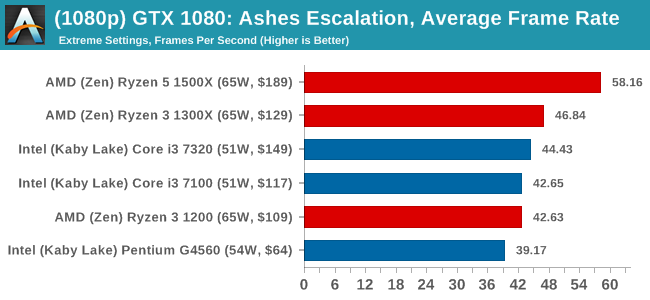
1080p

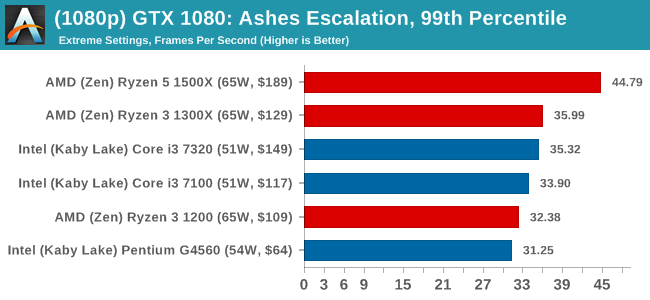
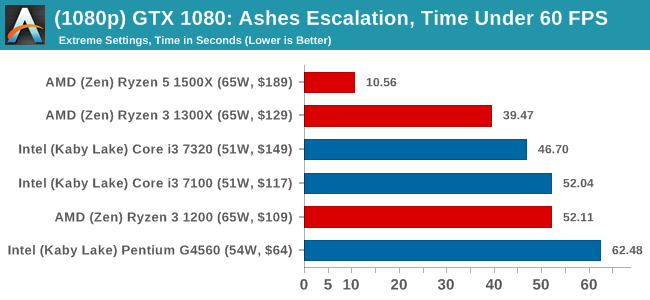
4K
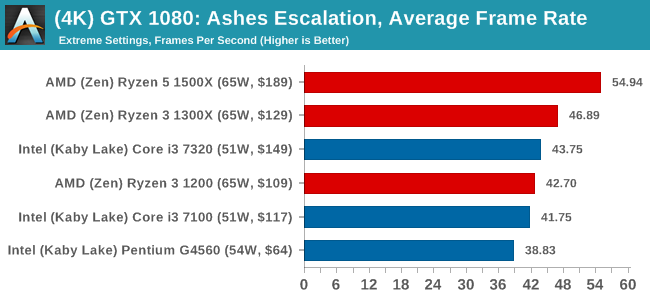
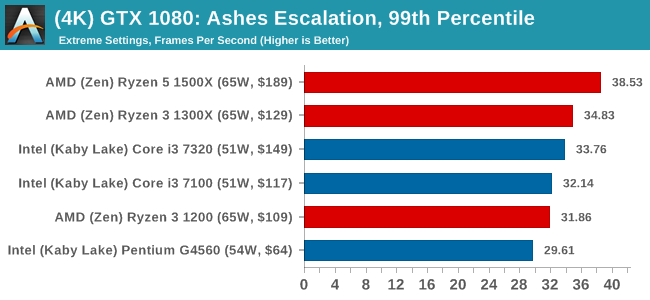
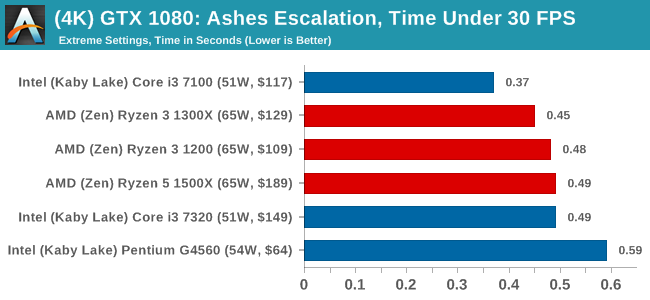
ASUS GTX 1060 Strix 6GB Performance
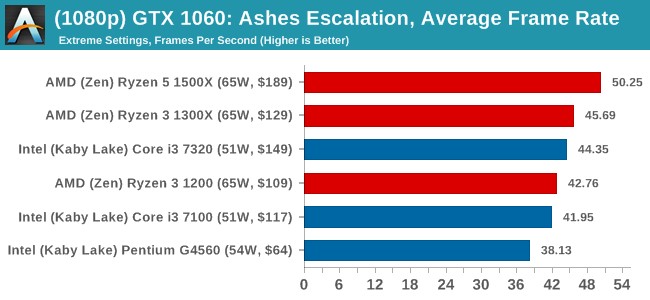
1080p

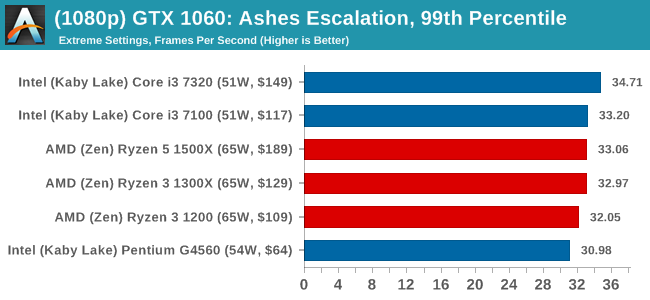
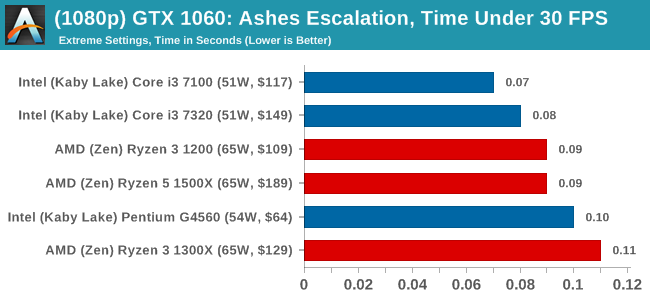
4K
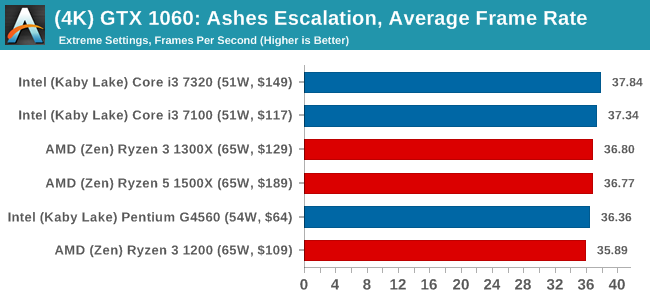
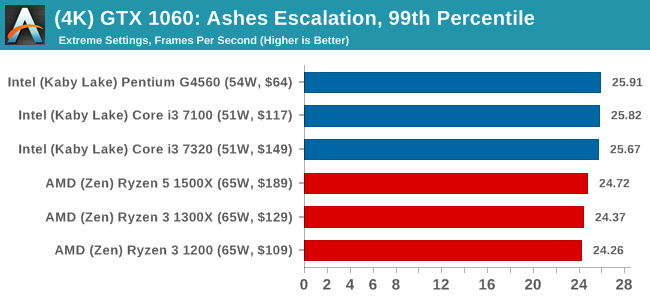
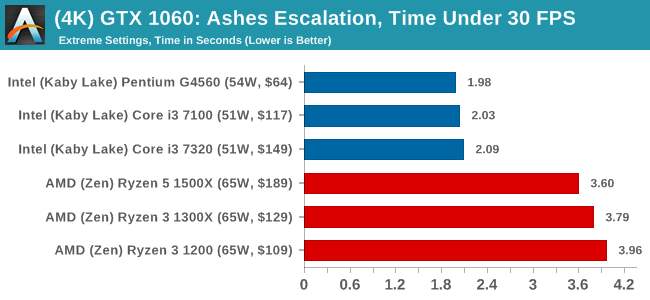
Sapphire R9 Fury 4GB Performance
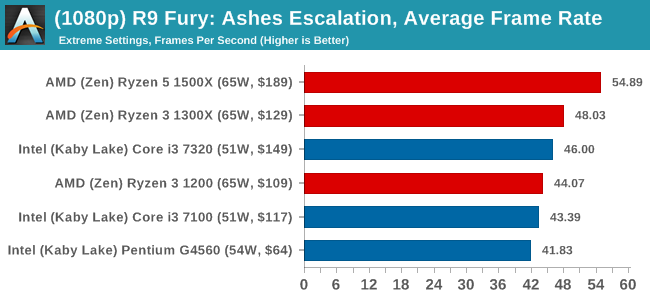
1080p

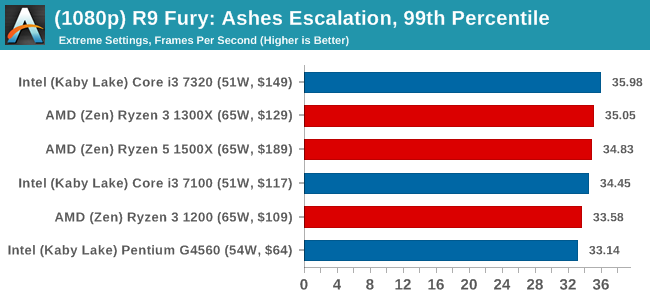
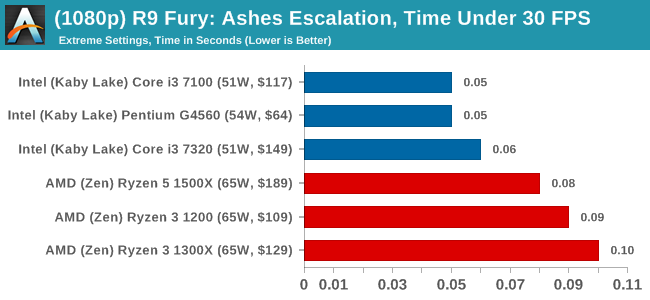
4K


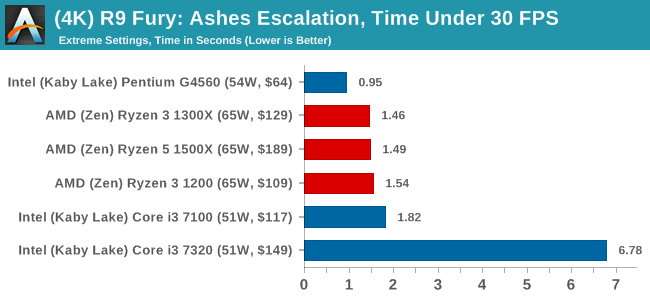
Sapphire RX 480 8GB Performance
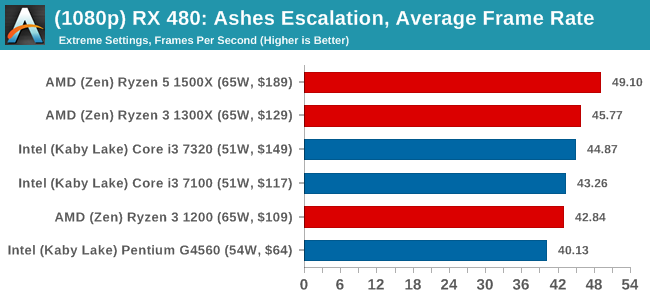
1080p

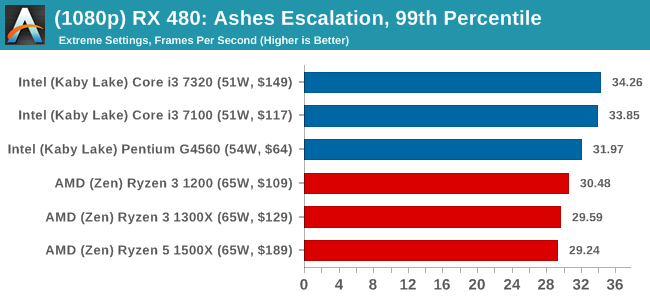
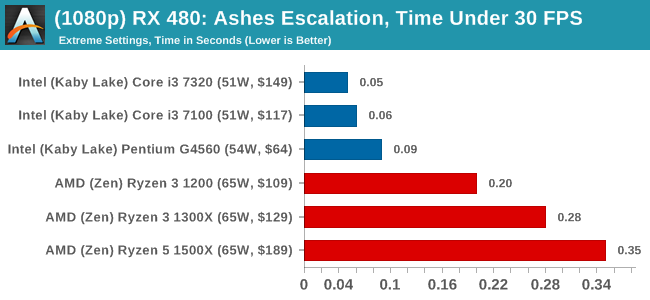
4K
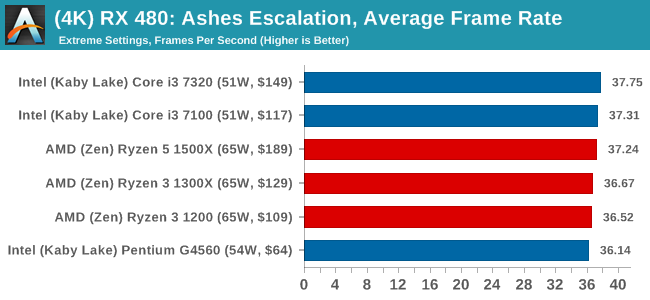
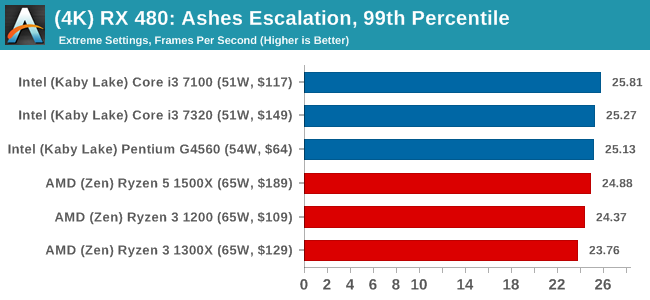













140 Comments
View All Comments
Ian Cutress - Thursday, July 27, 2017 - link
lol yup, just saw it. Should be 889, not 89.T1beriu - Thursday, July 27, 2017 - link
Congrats on getting the review out on day one!Blender 2.78 chart has wrong result number for 1300X.
http://images.anandtech.com/graphs/graph11658/8919...
Ian Cutress - Thursday, July 27, 2017 - link
We always get CPU reviews out on day one... ;)Blender is fixed.
T1beriu - Thursday, July 27, 2017 - link
Another chart that needs a little bit of edit - "Title" at the bottom.http://images.anandtech.com/doci/11658/combined_cp...
jjj - Thursday, July 27, 2017 - link
For value,in the real world mixed or lightly threaded should have more weigh, especially in the lower end where low core count and lower clocks can be a limitation.For power, when comparing diff numbers of cores , the system power is important too- lets say you can have a dual core system at 60W vs a quad at 70W peak. Even if the dual core is more efficient, at the system level the quad wins.
nathanddrews - Thursday, July 27, 2017 - link
Performance is nice and price is good IF you have a dGPU. For entry-level gaming/HTPC builds, that Intel IGP is more valuable than most people think, especially given the amount of media decode/encode power it has. All you need is i3 and you can be watching Netflix 4K or UHD Blu-ray and then switch to playing 1080p 60fps Rocket League. You can do the latter with R3 if you buy a dGPU, but sadly there's no current way to do Netflix or UHD Blu-ray without Intel SGX.MajGenRelativity - Thursday, July 27, 2017 - link
I think that's why AMD also picked this time to release Bristol Ridgemczak - Thursday, July 27, 2017 - link
Yes, imho these cpus are only mildly interesting.In this cpu performance segment, chances are pretty high that a integrated gpu would be good enough. (Sure there's always someone who has a need for high cpu / low gpu, or low cpu / high gpu performance, but I don't think that's the norm.)
So, if a integrated gpu is good enough, with factoring in the cost of an additional gpu amd can't compete on price here. The really interesting competition from AMD in this lower end market has to come from Raven Ridge APUs.
nathanddrews - Thursday, July 27, 2017 - link
In the wise words of Peter Klavin, "Totes McGotes."T1beriu - Thursday, July 27, 2017 - link
Done! Thanks.When should I come back for the full review?